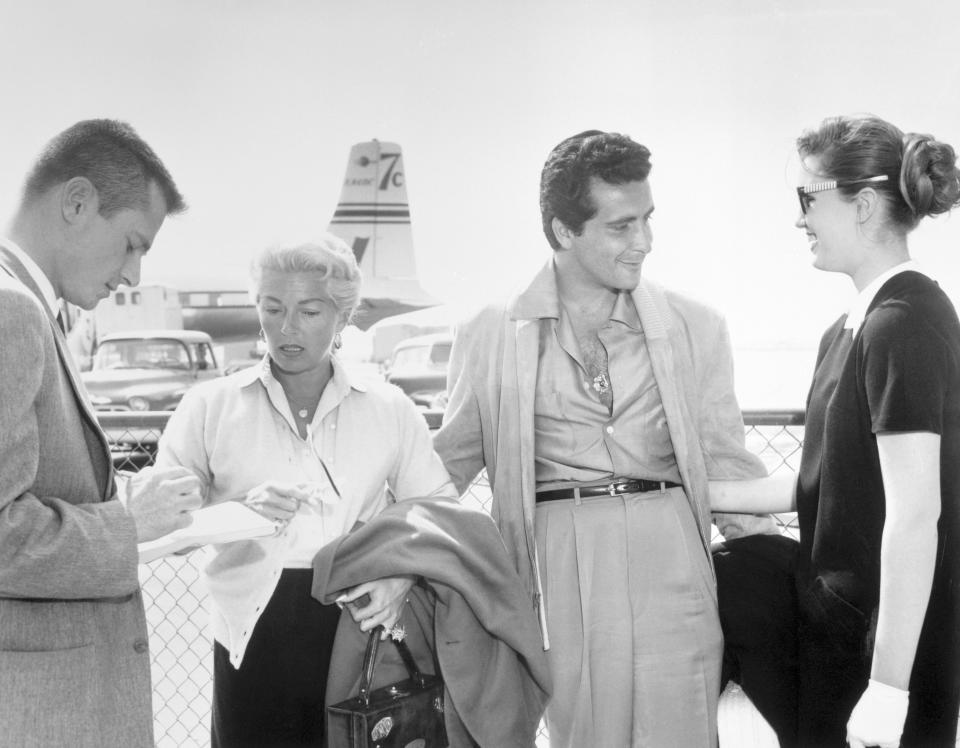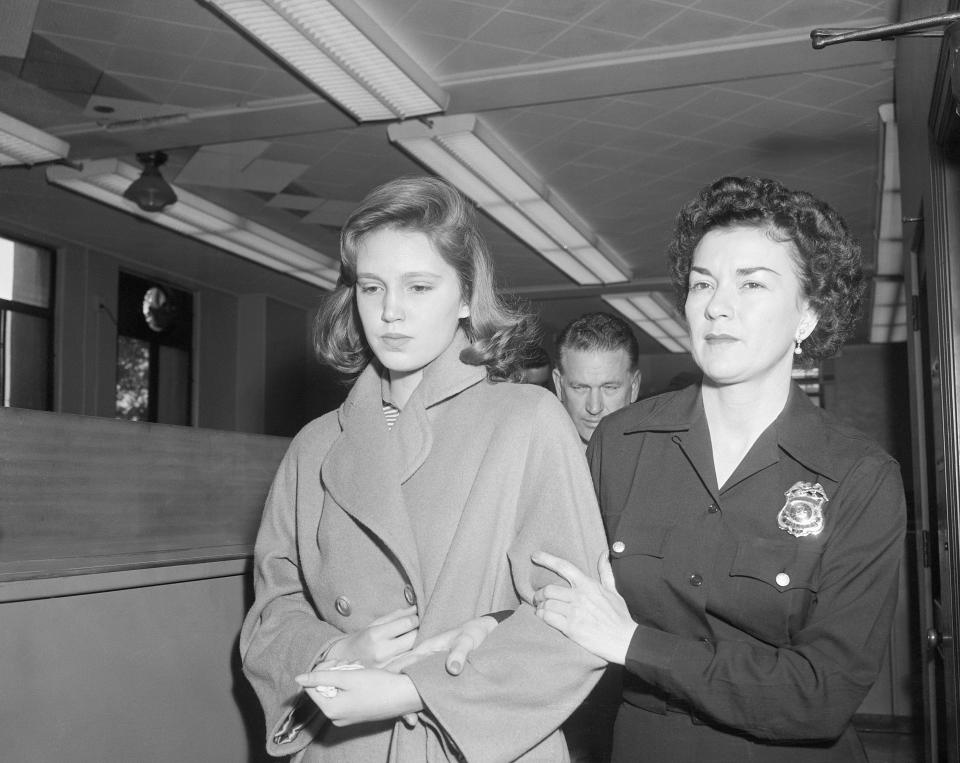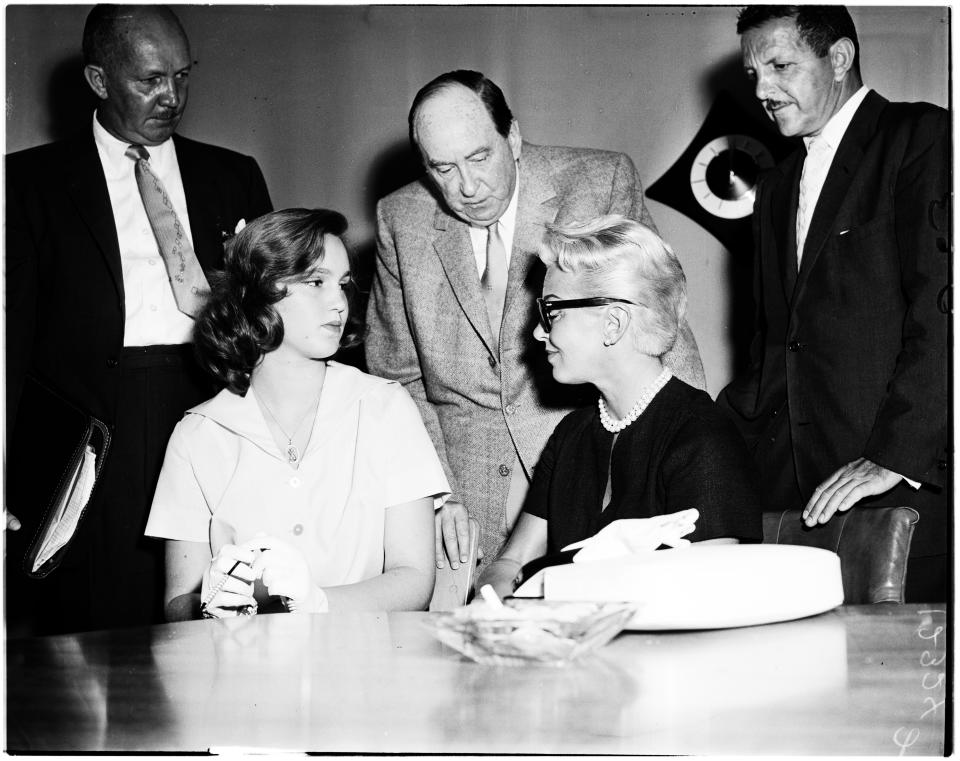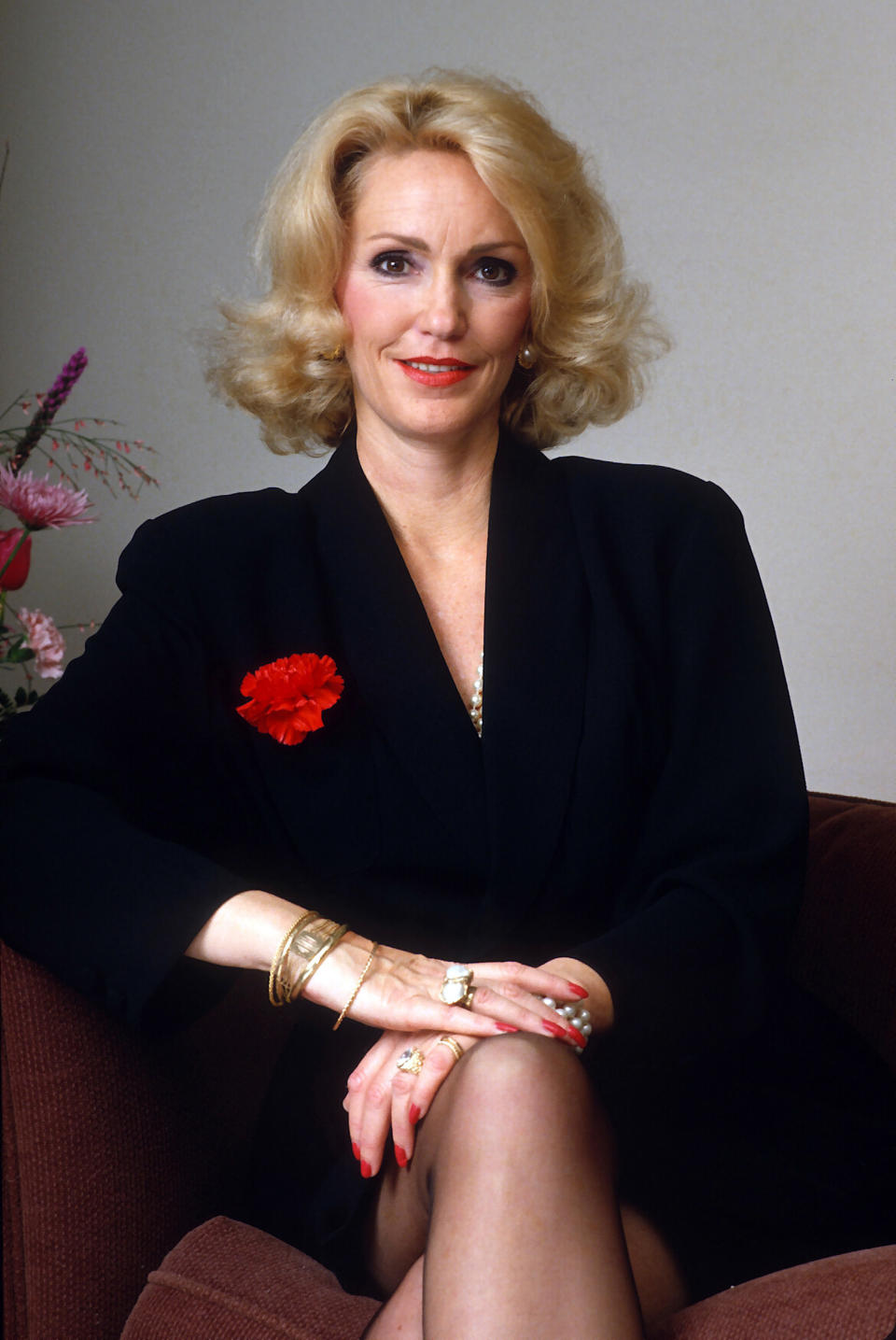Lana Turner: New Questions Arise About the Stabbing Death of Her Mobster Boyfriend
Still in a state of shock, the teenage daughter of Lana Turner allowed herself to be led outside by her father on April 4, 1958. “The door opened, and the pop-pop-pop of flashbulbs produced a moment of daylight,” Cheryl Crane writes in her memoir Detour: A Hollywood Story. “The night was filled with the crackle of police radios, reporters’ shouts, sirens, and the rustling speech of onlookers. Dad slid me into the police car, and we sped off to the Beverly Hills Police Station.”
The stabbing death of mobster Johnny Stompanato at the home of silver screen siren Lana ignited one of the biggest scandals Hollywood has ever known. Over the course of the investigation into his death, the lurid details of Lana’s romance with Stompanato, his threats against her and her family and Cheryl’s rush to the defense of her mother would make headlines around the world.

The court would call Johnny’s killing “justifiable homicide,” but more than 60 years later, people still wonder if Lana actually killed her abusive boyfriend and let Cheryl, then 14, take the blame. “Her daughter was a minor at that point, so she wouldn’t have suffered the same consequences in a prosecution,” Josh Young, one of the authors of The Fixer: Moguls, Mobsters, Movie Stars and Marilyn, a recent book on Hollywood detective Fred Otash, tells Closer exclusively. Adds ?coauthor Manfred Westphal: “Otash was called in to clean up and help minimize the collateral damage of what almost everyone there that night knew would become a tremendous scandal, which was Lana’s worst nightmare.”
Lana Turner's Man Trouble
In the spring of 1957, Stompanato, a bodyguard for mob boss Mickey Cohen, began sending flowers and gifts to Lana on the set of The Lady Takes a Flyer. Despite warnings from friends, she began dating him and was, for a time, quite besotted. “My darling,” Lana addressed Johnny in a letter recounting the start of their courtship. “When near me, [you] make most of those dreams come to life.”
Johnny’s interest in Lana likely wasn’t innocent. “Mickey Cohen and Johnny Stompanato targeted Lana Turner,” alleges Casey Sherman, author of A Murder in Hollywood: The Untold Story of Tinseltown’s Most Shocking Crime. “They wanted to put her in a compromising situation that they could use to gain money from her estate.” Lana would later claim that Johnny drugged her and took nude photos of her while unconscious to use as blackmail. She wasn’t alone. According to The Fixer, actresses Kathryn Grayson, Ann Miller and Marilyn Monroe also were blackmail victims of Cohen and Stompanato.
In late 1957, word that Lana was getting too close to her costar Sean Connery while filming Another Time, Another Place in London reached Johnny’s ears. He arrived on the set with a gun and warned the Scottish actor to stay away from Lana. “The future James Bond quickly bent Johnny ’s wrist back until the gangster dropped his gun, then he punched him in the face in front of the entire crew,” write Young and Westphal.
A few months later, Lana took her mother, Mildred, and Cheryl to the 1958 Academy Awards instead of her lover in a bid to distance herself from Stompanato that went horribly wrong. Upon returning home that night, he badly beat the Peyton Place nominee, according to The Fixer. Murder in Hollywood author Casey Sherman says that Stompanato also threatened to harm Cheryl and Mildred. “I don’t think Johnny ever realized that Lana would have done anything to protect her family,” says Sherman.
Cheryl Crane's Desperate Act
On the night of April 4, 1958, Cheryl said she heard her mother and Stompanato fighting for more than an hour. She grabbed a knife from the kitchen and headed to her mother’s room. “I don’t think I consciously said to myself, ‘Well, I’m going to stab him.’ I don’t. It was more something for protection. He was threatening all of us,” says Cheryl. In her testimony, she said Stompanato chased Lana out the door and ran into her knife. “For three ghastly heartbeats, our bodies fused,” writes Cheryl in Detour. "He looked straight at me, unblinking. ‘My God, Cheryl, what have you done?’”

When Otash arrived at Lana’s home, her attorney, Jerry Giesler, was already there along with Cheryl’s father, Lana’s ex-husband Stephen Crane, and Lana’s mother, Mildred. “Otash couldn’t help but notice there were only a few drops of blood dotting the plush pink carpet,” write Young and Westphal, “a clear indication that the crime scene had been tampered with.”
Lana and Cheryl’s testimony, both that night to the police, and weeks later in court, perfectly matched up. “Cheryl idolized her mom,” film historian Cindy De La Hoz, who is the ?coauthor with Cheryl of Lana: The Memories, the Myths, the Movies, explains to Closer exclusively. “She killed a man who was attacking her mother.”

While public opinion has always been on Lana and Cheryl’s side, gossip about who actually held the knife has swirled for decades. “The fact that Stompanato was looking back toward Turner, carrying clothes on hangers over his shoulder and leaving the room, made the self-defense theory a bit shaky,” wrote Bill Higgins in a 2011 The Hollywood Reporter story.
Otash, who died in 1992, also implied that there was more to the tale than everyone knew. “Fred had firsthand knowledge of what led up to these events and what went down on that night in 1958,” says Young. “Let’s just say it conflicts with the official version.” Sherman, who interviewed witnesses and received access to the original police files, goes a step further: “I strongly believe Lana Turner killed Johnny Stompanato, but I think she did so in the ultimate attempt to protect her family, her mother and her daughter,” he says. “And I believe Lana Turner was justified in what she did.”
Cheryl Crane and Lana Turner's Relationship Downturn
After the inquest, Cheryl was made a ward of the state. She fled institutionalization several times and even attempted suicide. Her relationship with her mother also suffered. “Considering all that she and I had just been through, I suppose our relationship was destined to be like gasoline and matches,” she writes of this difficult period. “I wanted to defy anything [Lana] stood for.”

That changed with time. Cheryl, who has lived her adult life out of the spotlight, became a Palm Springs real estate broker and married in 2014. The trauma of Stompanato’s death and its aftermath “caused her to distance herself from her mother,” says De La Hoz, “but in the last 10 years of Lana’s life, she and Cheryl were closer than ever.”
